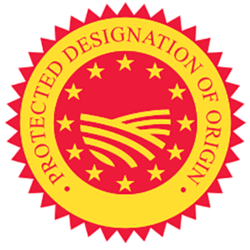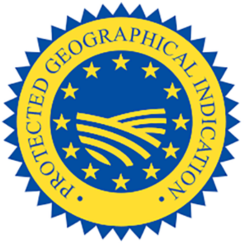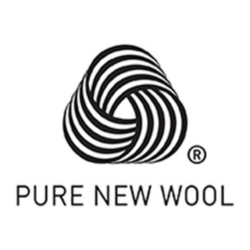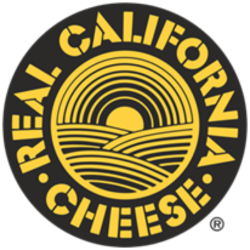Not All Gruyere Comes From Gruyère: A Primer in Geographic Certification Marks

In a decision characterized by the National Milk Producers Federation as a "momentous victory for American consumers, farmers and food manufacturers" and a "huge victory for worldwide producers" of gruyere cheese, the U.S. Court of Appeals for the Fourth Circuit rejected an appeal by two consortia of Swiss and French producers – the Interprofession du Gruyère and the Syndicat Interprofessionel du Gruyère – from a district court ruling that the U.S. Patent and Trademark Office (PTO) did not err in rejecting their attempt to register "GRUYERE" as a certification mark, which if granted would have precluded use of the word on any cheese not made in the Gruyère region of Switzerland and France.
Certification Marks
Even if they are not familiar with the details or terminology, many consumers have some general familiarity with the European concept of "protected designation of origin," often indicated by one of the following symbols:


For example, cheese may not be sold as Parmigiano Reggiano and sparkling white wine may not be sold as champagne unless they are made in the designated regions (and according to specific standards).
This type of regime does not exist in the United States. The closest parallel is a type of mark called a certification mark. Unlike a trademark – which indicates the source of goods, i.e., their manufacturer – a certification mark speaks to their characteristics. As set forth in the statute, a certification mark is "any word, name, symbol, or device, or any combination thereof" that is used "to certify regional or other origin, material, mode of manufacture, quality, accuracy, or other characteristics of such person's goods or services or that the work or labor on the goods or services was performed by members of a union or other organization." 15 U.S.C. § 1127. An example is the well-recognized Woolmark symbol:

which is owned by an Australian company and indicates that woolen garments have been tested and certified to conform to its standards of identity and quality. Certification marks may also indicate geographic origin, as in the case of the California cheese mark:

Geographic origin
Use of a certification mark to indicate geographic origin takes us to the case behind this article. La Gruyère is part of the Canton of Fribourg in Switzerland. Gruyere cheese originated in La Gruyère and long ago came to be made in nearby areas of France as well. Gruyere cheese from Switzerland is subject to the red protected designation of origin symbol, while Gruyere cheese from France is subject to the blue protected geographic indication symbol.
In 2015, the Swiss and French gruyere consortia applied for a certification mark, which if granted would have permitted them to restrict use of the word "gruyere" to cheese made by their members in conformity with the European standards. American cheese and dairy interests opposed the application, and it was rejected by the PTO. Under the trademark statute, the applicants had a choice of where or how to seek judicial review: they could either appeal to the Federal Circuit or commence a civil action in the U.S. District Court for the Eastern District of Virginia, which embraces Alexandria, Virginia (home of the PTO). They chose the latter, which afforded them the opportunity for discovery and the potential for a trial, as well as the opportunity for further appeal to the Fourth Circuit (which embraces Virginia) instead of the Federal Circuit.
The district court granted summary judgment against the plaintiffs, holding that the term "gruyere" was generic and hence ineligible for registration as a certification mark. As explained by the Fourth Circuit in its March 2023 decision affirming the district court's grant of summary judgment, a term is generic when it indicates the type of a product as opposed to its source:
[A]s is the case with trademark registration, "[a] generic name – the name of a class of products or services – is ineligible" for registration as a certification mark. "A generic term, by definition, identifies a type of product, not the source of the product." And even if a term was once non-generic, the term can become generic when it "ceases to identify in the public's mind the particular source of a product or service but rather identifies a class of product or service, regardless of source." … In other words, "[t]he critical issue in genericness cases is whether members of the relevant public primarily use or understand the term sought to be protected to refer to the genus of goods or services in question." Moreover, "a term is generic if the relevant public understands the term to refer to part of the claimed genus of goods or services, even if the public does not understand the term to refer to the broad genus as a whole."
Interprofession du Gruyere v. U.S. Dairy Export Council, 61 F.4th 407, 416 (4th Cir. 2023) (citations omitted).
The biggest impediment to the consortia's efforts to obtain their sought-after certification mark was the long history of referring to a style of cheese as "gruyere." For example, domestically produced cheese had been commercialized using the name "gruyere" since at least 1991, and imported cheese described as "gruyere" had been imported into the U.S. from countries other than France and Switzerland since at least 1995. Unfortunately, the Fourth Circuit's opinion did not reveal how the volumes of gruyere cheese of French or Swiss origin compared to the volume of such cheese from other sources. Although that evidence was in the record, the actual numbers were redacted in the published opinion, presumably because the data were obtained from nonparties that requested confidential treatment and no interested person objected to the numbers being withheld from public view. All that can be said was that the volume of cheese from other sources was not de minimis.
Adding to the consortia's difficulty was the fact that the FDA had in 1977 promulgated a regulation defining a standard of identity for gruyere cheese that was limited to its ingredients and characteristics, without any requirement for its place of manufacture. Although not dispositive, the adoption of a standard of identity devoid of geographic restrictions was further evidence that the American usage of "gruyere" was to describe a type of cheese, not identify from whence it came.
Lessons Learned
This case illustrates the challenges in obtaining a certification mark based on a placename for products that – as with gruyere cheese – are commonly identified by that very name. What lessons can be learned from this outcome?
From a potential applicant's side, this case shows the importance of seeking a certification mark without delay if the sought-for mark is being used or might be used to describe the type of product instead of its origin. In the world of cheese, use of placenames to identify a type of cheese is common, e.g, Swiss cheese (also known as Emmental cheese), Parmesan cheese, Romano cheese, Gouda cheese, Munster cheese and Limburger cheese. In the U.S., these terms are all generic. Gruyere cheese can be definitively added as a generic name that is unconnected to its geographic origin.
An applicant may have an easier time seeking to register a mark that includes a placename without consisting entirely of that name. A good example of this is the "Real California Cheese" certification mark shown above, which includes an arbitrary design.
On the other side, companies that would be adversely impacted by registration of a placename certification mark may wish to keep apprised of efforts by others to register a mark they are already using. In this case, a trade association stepped in on behalf of its members to oppose the consortia's application, demonstrating that it may not be necessary for a concerned company to bear such burdens by itself.
Although gruyere is "widely considered among the greatest of all cheeses," according to the Oxford Companion to Cheese, U.S. consumers looking to purchase gruyere that Europeans would consider the genuine article will have to look for the protected designation symbols and not rely on the name.
